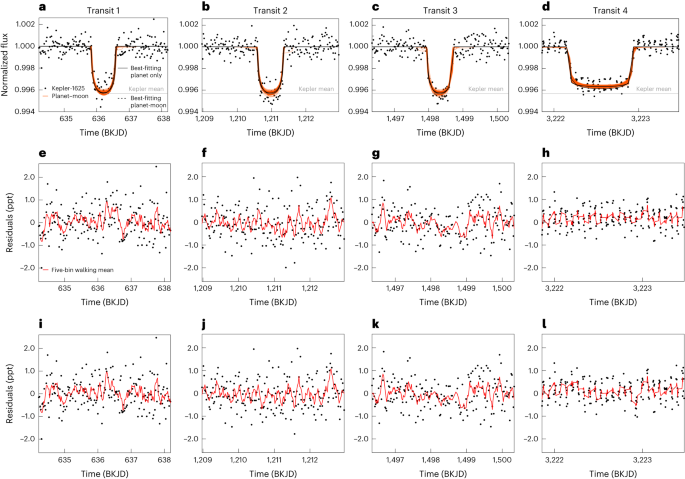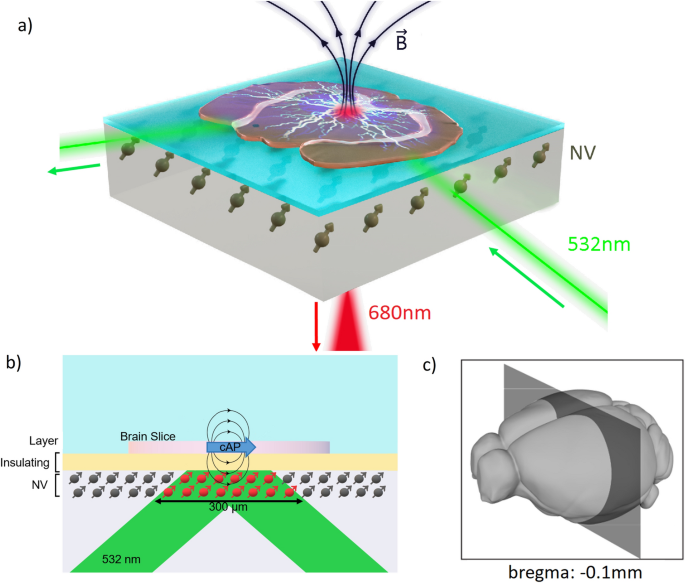2023-12-08 マックス・プランク研究所
◆彼らの分析によれば、ケプラー-1625bおよびケプラー-1708bにはエクソムーンが存在するという以前の主張は否定され、エクソムーンの検索は誤検出の可能性が高いことも示唆されました。
<関連情報>
- https://www.mpg.de/21217437/1205-aero-giant-doubts-about-giant-exomoons-151060-x
- https://www.nature.com/articles/s41550-023-02148-w
- https://www.aanda.org/articles/aa/full_html/2022/06/aa43129-22/aa43129-22.html
ケプラー1625bとケプラー1708bの周囲に巨大エクソモーンが存在する可能性は低い Large exomoons unlikely around Kepler-1625 b and Kepler-1708 b
René Heller & Michael Hippke
Nature Astronomy Published:07 December 2023
DOI:https://doi.org/10.1038/s41550-023-02148-w

Abstract
There are more than 200 moons in our Solar System, but their relatively small radii make similarly sized extrasolar moons very hard to detect with current instruments. The best exomoon candidates so far are two nearly Neptune-sized bodies orbiting the Jupiter-sized transiting exoplanets Kepler-1625 b and Kepler-1708 b, but their existence has been contested. Here we reanalyse the Hubble and Kepler data used to identify the two exomoon candidates employing nested sampling and Bayesian inference techniques coupled with a fully automated photodynamical transit model. We find that the evidence for the Kepler-1625 b exomoon candidate comes almost entirely from the shallowness of one transit observed with Hubble. We interpret this as a fitting artefact in which a moon transit is used to compensate for the unconstrained stellar limb darkening. We also find much lower statistical evidence for the exomoon candidate around Kepler-1708 b than previously reported. We suggest that visual evidence of the claimed exomoon transits is corrupted by stellar activity in the Kepler light curve. Our injection-retrieval experiments of simulated transits in the original Kepler data reveal false positive rates of 10.9% and 1.6% for Kepler-1625 b and Kepler-1708 b, respectively. Moreover, genuine transit signals of large exomoons would tend to exhibit much higher Bayesian evidence than these two claims. We conclude that neither Kepler-1625 b nor Kepler-1708 b are likely to be orbited by a large exomoon
パンドラ:高速なオープンソースのエクソムーン通過検出アルゴリズム Pandora: A fast open-source exomoon transit detection algorithm
Michael Hippke and René Heller
Astronomy & Astrophysics Published:14 June 2022
DOI:https://doi.org/10.1051/0004-6361/202243129

Abstract
We present Pandora, a new software to model, detect, and characterize transits of extrasolar planets with moons in stellar photometric time series. Pandora uses an analytical description of the transit light curve for both the planet and the moon in front of a star with atmospheric limb darkening and it covers all cases of mutual planet–moon eclipses during transit. The orbital motion of the star-planet-moon system is computed with a high accuracy as a nested Keplerian problem. We have optimized Pandora for computational speed to make it suitable for large-scale exomoon searches in the new era of space-based high-accuracy surveys. We demonstrate the usability of Pandora for exomoon searches by first simulating a light curve with four transits of a hypothetical Jupiter with a giant Neptune-sized exomoon in a one-year orbit around a Sun-like star. The 10 min cadence of the data matches that of the upcoming PLATO mission and the noise of 100 parts per million is dominated by photon noise, assuming a photometrically quiet, mV = 11 Sun-like star for practicality. We recovered the simulated system parameters with the UltraNest Bayesian inference package. The run-time of this search is about five hours on a standard computer. Pandora is the first photodynamical open-source exomoon transit detection algorithm, implemented fully in the python programming language and available for the community to join the search for exomoons.



